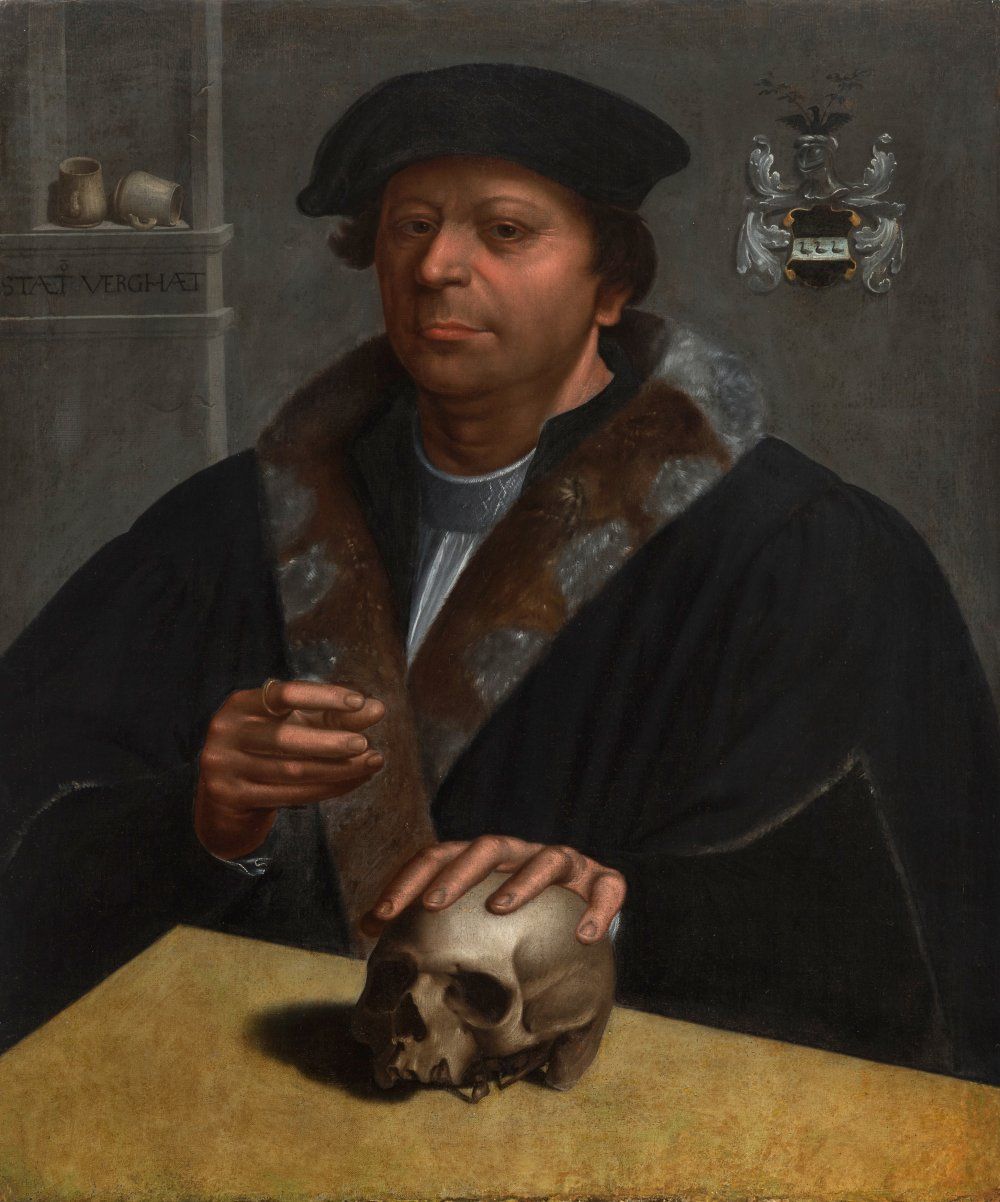Description
Flemish school, following models by JAN VAN SCOREL; ca. 1600. "Male portrait. Oil on canvas glued to panel. It presents repainting and restorations on the pictorial surface. Measurements: 77 x 63 cm. Starring the portrait of a man, this portrait transmits in its conception a message that goes beyond the pure personal elevation. Wrapped in religiosity, the protagonist adopts the gesture of blessing with his right hand, while he rests his left hand on a skull. This was a very common device in the painting of the period, used to point out the fleeting nature of life and material things as opposed to the eternity of a devout soul. The artist endows the scene with a great veracity that is particularly evident in the face of the protagonist, who shows the signs of age in a realistic and detailed manner, avoiding idealism. A real person of great monumentality who occupies a sober but defined space thanks to the table and the still life in the background composed of two cups. The work ends with a further detail, the protagonist's coat of arms, a symbol of his lineage and social position. The piece is aesthetically reminiscent of the painting of Jan Van Scorel (1495 - 1562), who was a Dutch painter, who played a leading role in introducing aspects of Italian Renaissance painting into Dutch and Flemish Renaissance painting. He was one of the first painters of the Romanist style who spent several years in Italy, where he fully absorbed the Italian style of painting. His trip to Italy coincided with the brief reign of the only Dutch pope in history, Adrian VI in 1522-1523. The Pope appointed him court painter and superintendent of his collection of antiquities. His stay in Italy lasted from 1518 to 1524 and he also visited Nuremberg, Venice and Jerusalem. Venetian art had an important impact on the development of his style. He differed from most Romanists in that he was a native of the northern Netherlands rather than Flanders and remained for most of his life in the northern Netherlands. He settled permanently in Utrecht in 1530 and established a large workshop on the Italian model. The workshop produced mainly altarpieces, many of which were destroyed by the iconoclasm of the Reformation in the years immediately after his death. He also held administrative posts.
1
Flemish school, following models by JAN VAN SCOREL; ca. 1600. "Male portrait. Oil on canvas glued to panel. It presents repainting and restorations on the pictorial surface. Measurements: 77 x 63 cm. Starring the portrait of a man, this portrait transmits in its conception a message that goes beyond the pure personal elevation. Wrapped in religiosity, the protagonist adopts the gesture of blessing with his right hand, while he rests his left hand on a skull. This was a very common device in the painting of the period, used to point out the fleeting nature of life and material things as opposed to the eternity of a devout soul. The artist endows the scene with a great veracity that is particularly evident in the face of the protagonist, who shows the signs of age in a realistic and detailed manner, avoiding idealism. A real person of great monumentality who occupies a sober but defined space thanks to the table and the still life in the background composed of two cups. The work ends with a further detail, the protagonist's coat of arms, a symbol of his lineage and social position. The piece is aesthetically reminiscent of the painting of Jan Van Scorel (1495 - 1562), who was a Dutch painter, who played a leading role in introducing aspects of Italian Renaissance painting into Dutch and Flemish Renaissance painting. He was one of the first painters of the Romanist style who spent several years in Italy, where he fully absorbed the Italian style of painting. His trip to Italy coincided with the brief reign of the only Dutch pope in history, Adrian VI in 1522-1523. The Pope appointed him court painter and superintendent of his collection of antiquities. His stay in Italy lasted from 1518 to 1524 and he also visited Nuremberg, Venice and Jerusalem. Venetian art had an important impact on the development of his style. He differed from most Romanists in that he was a native of the northern Netherlands rather than Flanders and remained for most of his life in the northern Netherlands. He settled permanently in Utrecht in 1530 and established a large workshop on the Italian model. The workshop produced mainly altarpieces, many of which were destroyed by the iconoclasm of the Reformation in the years immediately after his death. He also held administrative posts.
